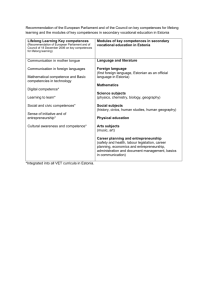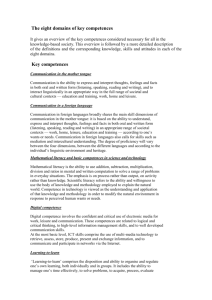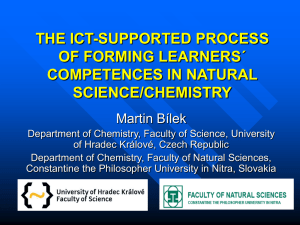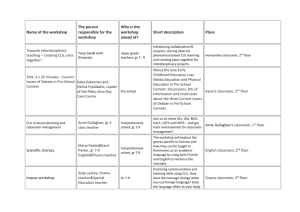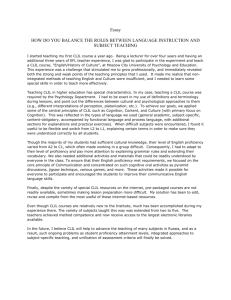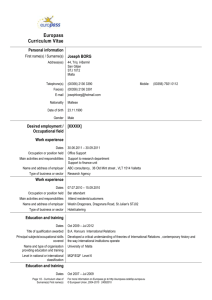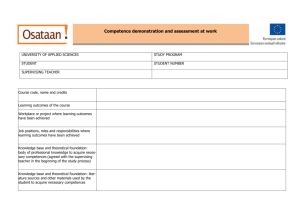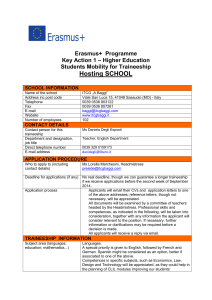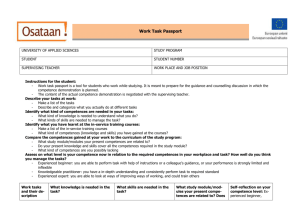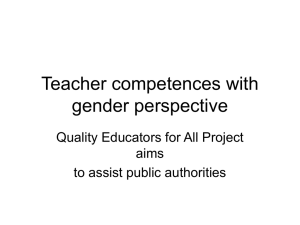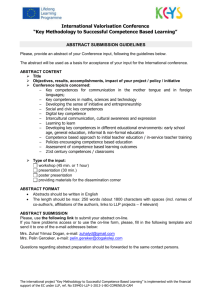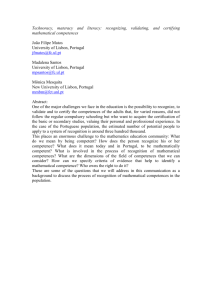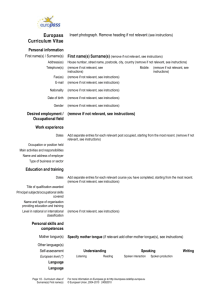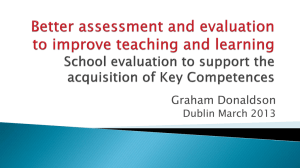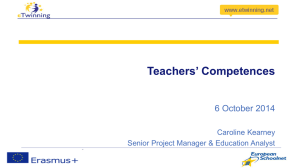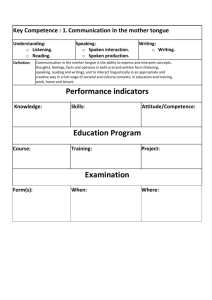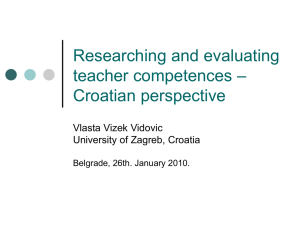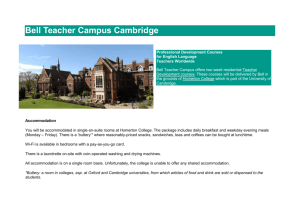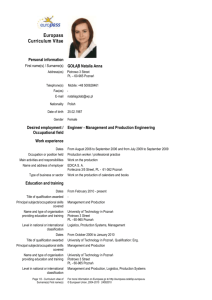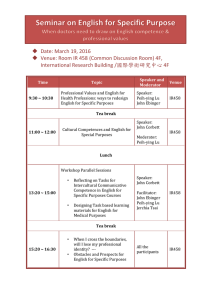Module 4 diary
advertisement
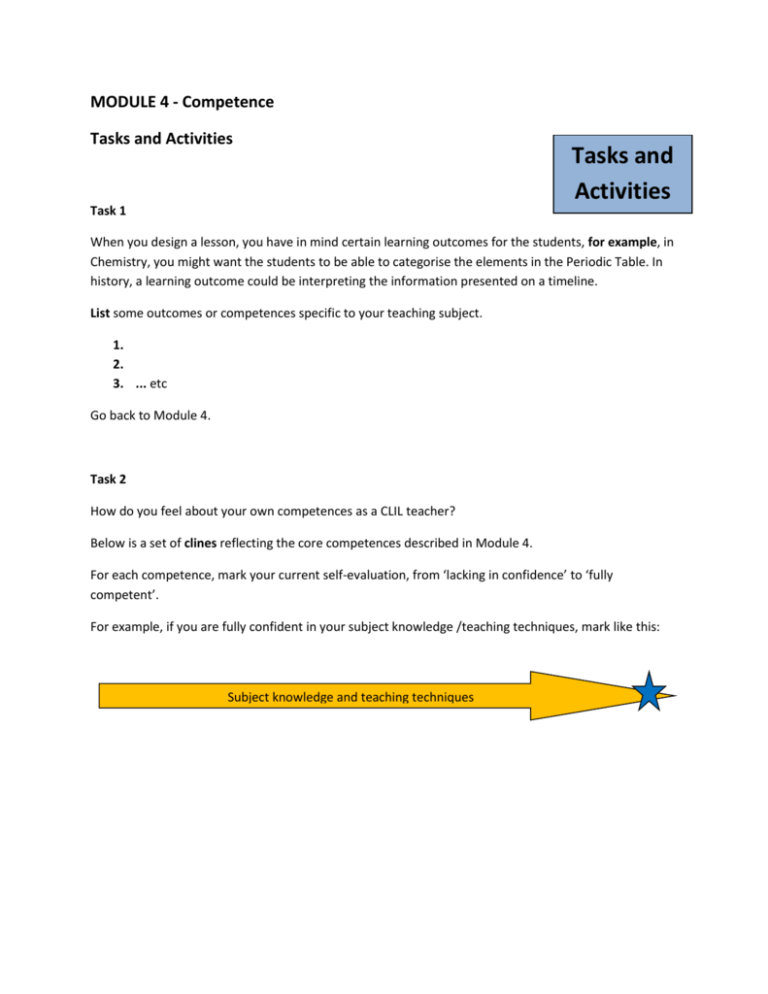
MODULE 4 - Competence Tasks and Activities Task 1 Tasks and Activities When you design a lesson, you have in mind certain learning outcomes for the students, for example, in Chemistry, you might want the students to be able to categorise the elements in the Periodic Table. In history, a learning outcome could be interpreting the information presented on a timeline. List some outcomes or competences specific to your teaching subject. 1. 2. 3. ... etc Go back to Module 4. Task 2 How do you feel about your own competences as a CLIL teacher? Below is a set of clines reflecting the core competences described in Module 4. For each competence, mark your current self-evaluation, from ‘lacking in confidence’ to ‘fully competent’. For example, if you are fully confident in your subject knowledge /teaching techniques, mark like this: Subject knowledge and teaching techniques Click on a star below, and drag it into place on a cline. Lacking in confidence Fully competent Subject knowledge & teaching techniques Targeted Language knowledge & teaching techniques Ability to plan an integrated approach to learning Ability to co-operate & form constructive relationships Awareness of learner needs Ability to facilitate interaction for learning Cultural awareness Ability to design clear assessment & evaluation criteria Openess to acquiring new teaching skills Task 3 To develop those competences you marked as ‘lacking in confidence’, set up a Personal Development Action Plan, using SMART objectives. Specific Measurable Achievable Relevant Time-bound Go back to Module 4. Task 4 Look briefly at the Europass self-assessment grid based on the CEFR. file:///C:/Users/ETI/Downloads/Europass%20-%20European%20language%20levels%20%20Self%20Assessment%20Grid.pdf Are Can Do statements helpful for you in assessing your own level of English? Go back to Module 4. Task 5 Write Can Do statements which reflect some learning outcomes from the topic you chose for the assignment in the PAPeR. You can include: Content knowledge, concepts, procedures and ‘how to learn’. Information processing such as collecting data, and presenting or interpreting information Specific language competences - Some examples are: - listening to/reading simple statements and choosing an answer to a simple question - giving an oral description or interpretation of a diagram - writing statements about the information given in a diagram - designing a diagram with a key to the symbols used Add the Can Do statements to your PAPeR under COMPETENCE. CLIL Techniques to Support Learning Which CLIL teaching techniques did we use in this Module to help you understand? CLIL Techniques Hint: Look at the phrases in bold on this page and on the Module 4 webpage. Reflection Think about these questions, and if possible, discuss your answers with a colleague. What? What did I do during this Module? What was the Module about? So what? What did I learn from it? What did I feel about it? How does my experience link to classroom concepts? Now what? Where can I get more information? How can I benefit from what I’ve learnt? What information can I share with other people? Which colleagues can I discuss this with? What? Who? How? Why? .... Reflection on your learning


